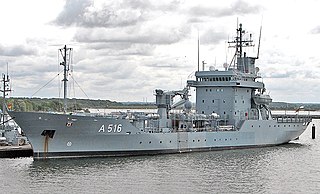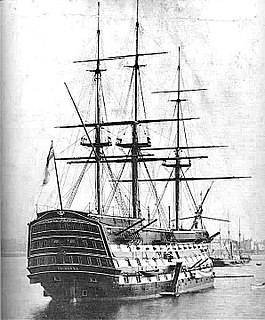| History | |
|---|---|
| Name: | USS Callao |
| Namesake: | Callao, a seaport city in Peru (Spanish Navy name retained) |
| Builder: | Manila Ship Company, Cavite, Philippines |
| Launched: | 1888 |
| Completed: | 1888 |
| Acquired: | Captured from Spain 12 May 1898 |
| Commissioned: | 17 July 1898 [1] |
| Fate: | Sold for scrap 13 September 1923 |
| Notes: | Served in Spanish Navy as gunboat Callao 1888–1898 |
| General characteristics | |
| Class and type: | Samar-class |
| Type: | gunboat |
| Displacement: | 243 long tons (247 t) |
| Length: | 119 ft (36 m) |
| Beam: | 17 ft 6 in (5.33 m) |
| Draft: | 6 ft 6 in (1.98 m) |
| Installed power: | 250 hp (190 kW) |
| Propulsion: |
|
| Speed: | 9.7 kn (11.2 mph; 18.0 km/h) |
| Capacity: | 32 long tons (33 t) coal |
| Armament: | 4 × 3-pounder guns, 2 × 1-pounder guns |
| Armor: | None |
Callao was a gunboat of the United States Navy which fought in the Spanish–American War and served in the U.S. fleet from 1898–1923.

A gunboat is a naval watercraft designed for the express purpose of carrying one or more guns to bombard coastal targets, as opposed to those military craft designed for naval warfare, or for ferrying troops or supplies.

The United States Navy (USN) is the naval warfare service branch of the United States Armed Forces and one of the seven uniformed services of the United States. It is the largest and most capable navy in the world and it has been estimated that in terms of tonnage of its active battle fleet alone, it is larger than the next 13 navies combined, which includes 11 U.S. allies or partner nations. with the highest combined battle fleet tonnage and the world's largest aircraft carrier fleet, with eleven in service, and two new carriers under construction. With 319,421 personnel on active duty and 99,616 in the Ready Reserve, the Navy is the third largest of the service branches. It has 282 deployable combat vessels and more than 3,700 operational aircraft as of March 2018, making it the second largest and second most powerful air force in the world.

The Spanish–American War was fought between the United States and Spain in 1898. Hostilities began in the aftermath of the internal explosion of USS Maine in Havana harbor in Cuba, leading to U.S. intervention in the Cuban War of Independence. U.S. acquisition of Spain's Pacific possessions led to its involvement in the Philippine Revolution and ultimately in the Philippine–American War.
Contents
Prior to her U.S. service, Callao was a gunboat in the Spanish Navy. For her characteristics and career in Spanish service, see Spanish gunboat Callao.

The Spanish Navy is the maritime branch of the Spanish Armed Forces and the oldest active naval force in the world. The Spanish navy was responsible for a number of major historic achievements in navigation, the most famous being the discovery of America by Christopher Columbus and the first global circumnavigation by Magellan and Elcano. For several centuries, it played a crucial logistical role in the Spanish Empire and defended a vast trade network across the Atlantic Ocean between the Americas and Europe and across the Pacific Ocean between Asia and the Americas.
Callao was a Samar-class gunboat of the Spanish Navy which served in the Spanish fleet from 1888 to 1898 and fought in the Spanish–American War.

















